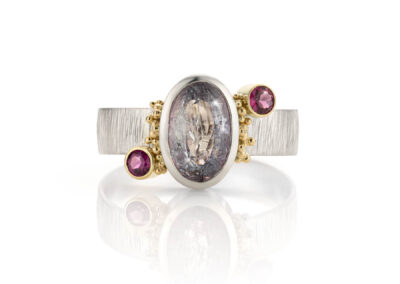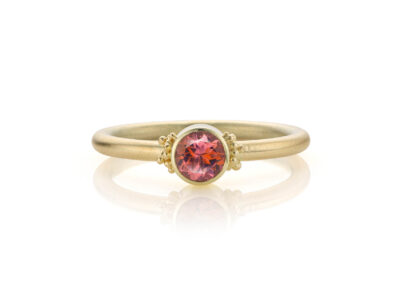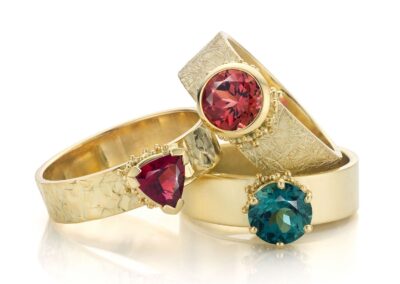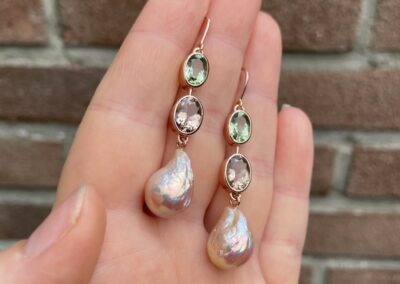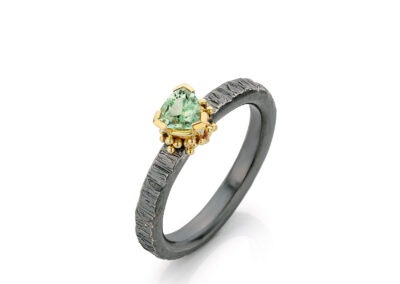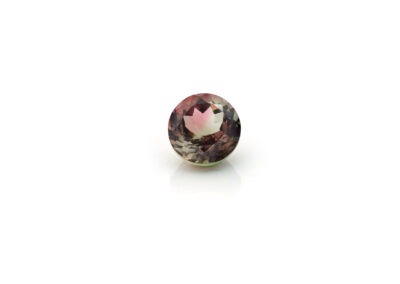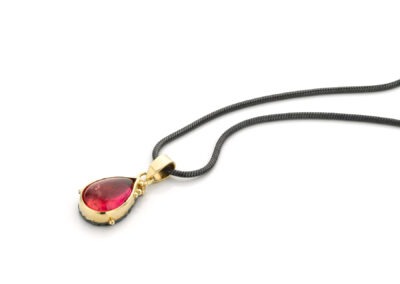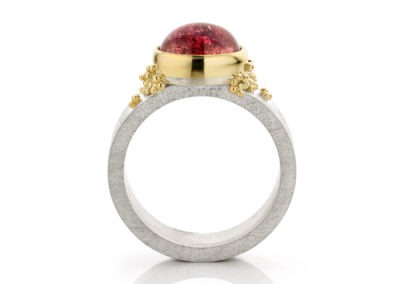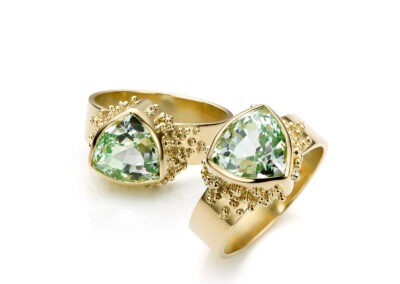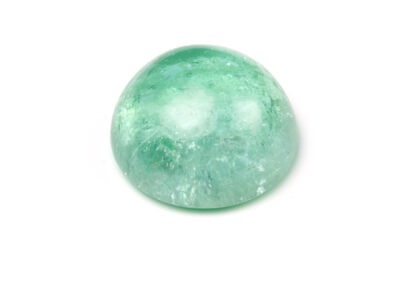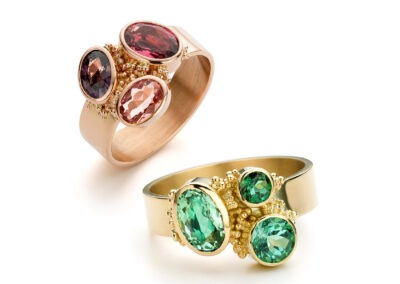The magic of tourmaline
Some gemstones are beautiful. Others are fascinating. And then there is tourmaline – a gemstone that combines both properties and continues to surprise endlessly. What touches me again and again is that some specimens almost seem to glow from within, as if there is a small light bulb inside. As a result, you see something slightly different in every light, which is why I never tire of it.
An enchantment that never fades
Ever since childhood, tourmaline has had an irresistible attraction for me. As a small collector, I treasured the raw varieties, and even today I cannot live without this colorful gemstone. Perhaps that is because there are so many different shades, there is always something new to discover. Besides, it feels a bit like shoes: there’s always room for one more pair … or in this case, one more gem (or two).
What makes tourmaline so special?
Each tourmaline is like a small work of nature’s art, with its own color palette and character. Sometimes you can see subtle gradients of color, while others are almost crystal clear. It is precisely these nuances that make tourmaline so irresistible.
-
Colors: Tourmaline appears in virtually every shade imaginable, from soft pastel to deeply saturated. Looking at a green variety, it sometimes appears almost emerald-like.
-
Multicolor: There are crystals with multiple colors in one stone. The famous watermelon tourmaline, with pink and green, always reminds me of a summer day: fresh, playful and light.
-
Pleochroism: Depending on the angle at which you look, the color may change. As a result, the same stone shows something new each time.
-
Durability: With a hardness of 7 to 7.5 on the Mohs scale, tourmaline is sturdy enough for jewellery, although it requires just a little more care than sapphire or diamonds.
How does that splash of color come about?
During the growth of a crystal, tourmaline absorbs small particles from the earth. These trace elements determine the color. For example, iron provides green, manganese provides pink and copper provides the spectacular neon blue hues of Paraiba tourmaline. As a result, it sometimes feels like the earth itself is painting with minerals – and that remains something magical to behold.
Sites around the world
Brazil is the best known source of tourmaline and provides a huge variety of colors. In addition, beautiful stones come from Madagascar, Afghanistan, Pakistan and various African countries. Each origin gives the stone a slightly different look. This makes the choice even more interesting for those who like to look for something unique.
Tourmaline in my jewellery
Working with this gemstone is all about proper selection. At my suppliers, I can get lost among the trays full of stones. Then I slide for hours, comparing them in different light and looking for that one stone that I think: yes, this is right. To an outsider that may seem like endless wavering, but to me it is pure enjoyment.
Therefore, tourmaline plays an important role in my collections. In the Sirius collection, the stone gives depth and character to the structures. He takes center stage in the Elevance collection, precisely because color and charisma play the main role there. In short, it is a gemstone that inspires me again and again.
How do you choose the right tourmaline?
For many people, choosing is difficult. Will you go for a soft pastel, a deep ruby hue or just a stone that pops with energy? Sometimes it’s love at first sight, but sometimes it’s a process of discovery and comparison. Therefore, in my studio, I am happy to help you find the color and look that really suits you.
Tourmaline: from rare to accessible
The bright blue Paraiba tourmaline is among the most valuable gemstones. Yet tourmaline need not be unattainable. Even a simple green or pink can give a piece of jewelry that special something. As a result, a suitable stone can be found for every budget.
Symbolism and meaning
Over the centuries, tourmaline has been seen as a protective stone. Black is said to ward off negative energy, pink symbolizes love and watermelon tourmaline brings harmony. Whether you take these meanings to heart or simply enjoy the beauty, tourmaline always knows how to touch.
Why I never get tired of tourmaline
No two stones are alike – and that is precisely what makes working with them so inspiring. Sometimes a tourmaline shines from within, while another surprises with an unexpected nuance. As a result, each stone feels like a new discovery, a story waiting to be translated into jewelry.
Are you curious about this versatile gemstone? You are welcome to visit my studio to view the finest specimens together. Simply make an appointment through my contact page.
Love,
Sarah


